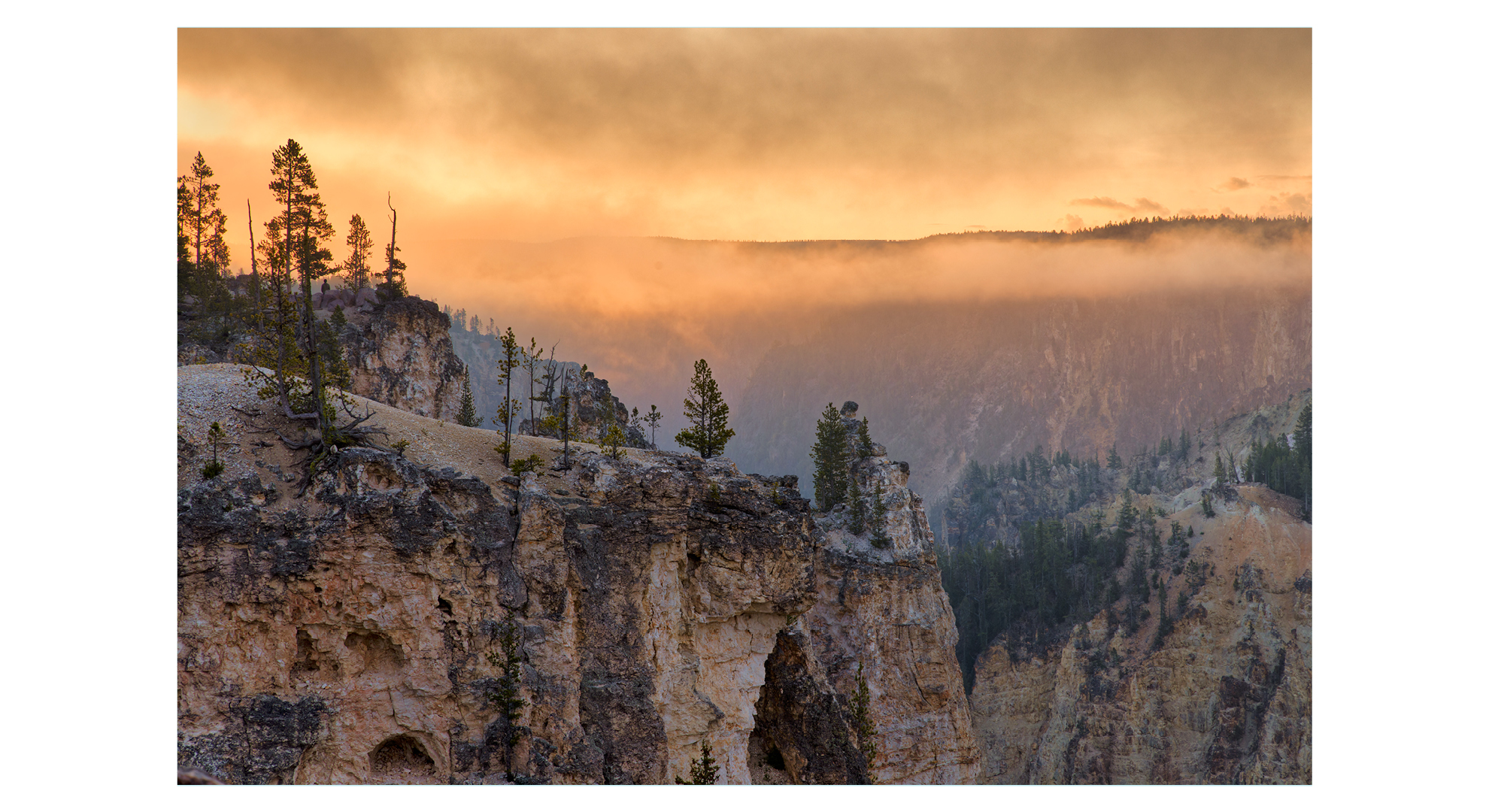
One of the foremost natural wonders of the USA, Yellowstone National Park is home to hundreds of species of animals sharing almost 3,500 square miles of a stunningly diverse and pristine landscape.
Located in Wyoming and Montana in the north-west of the country, Yellowstone has to contend with many environmental issues of our times – extreme weather conditions, warming temperatures and the impact of increasing visitor numbers and behaviour.
Yellowstone Forever, a non-profit partner of the park, promotes and protects Yellowstone through philanthropy and educational initiatives.
One of its supporters is Canon USA, which has brought together two of its ambassadors to produce a short film about the national park.
Charles ‘Chas’ Glatzer is a leading wildlife and nature photographer who has enjoyed a decades-long association with Yellowstone.
The film, called Seismic, follows Glatzer around the park, as he photographs the natural habitat using a Canon EOS R5 C hybrid camera, explaining why this location means so much to him.
Seismic was filmed by travel and adventure photographer and videographer and Canon creator Nathan Lee Allen, also using an EOS R5 C.
Shortly after the release of Seismic, we talked to Glatzer and Allen to discover more about the project. But first, watch the film…
How long does your association with Yellowstone go back for, and why is it such a special place for you?
Chas: What I love about Yellowstone is that every day in the park offers a new experience. The sheer diversity of species, the breathtaking environment and the captivating thermal features are unparalleled to anywhere else in the world. These elements continually draw me back and fuel my passion for photographing the park.
Nathan: I first visited Yellowstone on a family road trip when I was a kid in high school and it instantly became one of my favorite places.
To this day, the northwestern corner of Wyoming, from Grand Teton National Park to Yellowstone National Park, is one of my favorite regions of the world. Its four-season opportunities, incredible landscapes, and rich, diverse wildlife is a combination that is hard to beat.
What is your best memory of Yellowstone, and why?
Chas: I’ve been photographing in Yellowstone for two decades. It’s difficult to narrow it down as there have been may "once in lifetime" experiences over the years.
Photographing a bobcat with a frozen, just-caught mallard in winter, a pine marten catching a snowshoe hare, wolves chasing a bison, a bison caked in frozen snow, surreal sunrises/sunsets with geysers. And of course, a bison frozen in frost at -40F. And presumably there are many more to come.
Nathan: It’s not really a singular memory or moment, but experiencing the park in the dead of winter, alone, during a winter storm this past winter season was a top memory for me.
There were very few people around, wildlife was very active, and conditions were magical. Not only did I get the heavy snow conditions, but I was able to capture the beautiful conditions and light as the storm lifted, which was incredibly special. Experiencing Yellowstone in winter feels like how it was supposed to be – wild and rugged.
And presumably there are many more to come. What’s on your Yellowstone bucket list, so to speak?
Chas: I’m always looking for the next special moment to appear. Yellowstone never disappoints, it’s simply a matter of "Time in the Field", patience, and perseverance.
My favorite time in Yellowstone is winter. Bucket list... capturing the ultimate iconic frozen bison in thermal steam image. I’ve come close, wink.
Nathan: I want to go back in the dead of winter for significant blizzard conditions in negative degree temperatures to see and capture how animals like the American bison survive. I’ve been in the winter before but didn’t get the conditions I was hoping for (still good, though).
How is Canon USA helping to advance conservation efforts in Yellowstone, and to protect endangered species?
Chas: Eyes on Yellowstone, sponsored by Canon, is an advanced educational and research program in Yellowstone National Park. Canon’s support of Yellowstone Forever’s program has helped break new ground in conservation, endangered species protection, as well as the application of cutting-edge science and technology to manage the park’s delicate ecosystem and wildlife.
Canon’s support of Yellowstone Forever contributes to necessary scientific research that has helped break new ground in conservation, endangered species protection, and the application of cutting-edge science and technology that is essential to managing Yellowstone National Park’s delicate ecosystems and wildlife.
Yellowstone is an unbelievable place to photograph. The webcam, made possible by Canon, provides a streaming view of Old Faithful Geyser and other happenings around the Upper Geyser Basin – one of Earth’s most unique and dynamic places with about 500 active geysers.
Canon USA makes this live view possible through a generous grant to Yellowstone Forever. It’s truly inspiring!
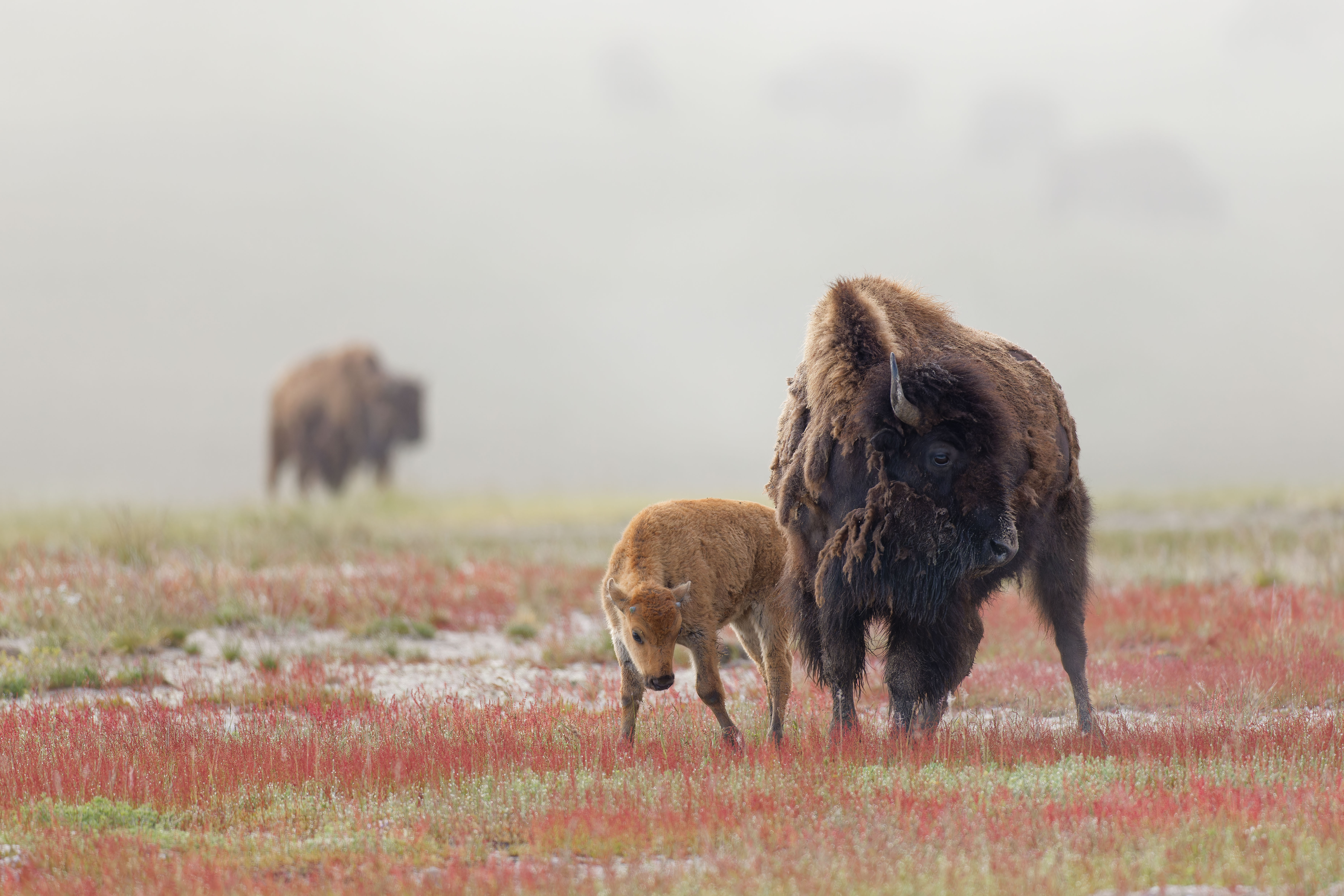
What role does the new limited-edition book – and film – play in this?
Chas: Recently, Canon worked with Yellowstone Forever on a special project— the short film "Seismic". As a member of Canon’s Explorer of Light program, I had the honor of collaborating with Canon and Canon Creator Nathan Lee Allen on this cinematic tribute to the park.
The film beautifully captures Yellowstone’s wildlife, unique landscapes, and world-famous thermal features.
Following its debut, Canon compiled our photos into a limited-edition book. This initiative underscores the importance of preserving Yellowstone and its inhabitants, demonstrating Canon’s strong commitment to protecting the environment.
How did the collaboration come together?
Chas: Canon’s sponsorship of Yellowstone Forever began in 1997 with the creation of the Eyes on Yellowstone project.
Since then, Canon has consistently backed Yellowstone Forever, aiding critical scientific research and leading efforts in conservation, endangered species protection, and advanced science and technology vital for managing Yellowstone’s delicate ecosystems.
By leveraging their network of wildlife photographers and content creators, Canon has illuminated the park’s beauty, while highlighting the art of photography and its role in documenting this significant and ever-changing natural treasure.
What are the major changes you have seen in the park over the years? And what are the greatest challenges facing it, going forwards?
Chas: Over the years, I’ve observed a significant increase in visitors. Unfortunately, this has led to more incidents of wildlife and their habitats being disturbed. Yellowstone’s thermal features have also significantly changed, such as the Morning Glory pool, which has altered color due to tourists tossing coins and other objects into it.
Yellowstone is visited yearly by hundreds of thousands of people from all over the world. Unfortunately, in their excitement to experience the wonders of Yellowstone, many tourists, especially those who come from areas void of wildlife, tend to ignore regulations, which put them and the animals in danger.
The park rules and guidelines are there for a reason, designed to protect your safety and others around you, along with the welfare of the animals. I implore those visiting to take a step back and see Yellowstone for its incredible wonder and understand that we are visitors to this incredible habitat.
Nathan: The biggest change and challenge for me is the increase in visitors, which I think is directly correlated to social media and internet exposure.
I believe increased awareness and visitation can be good, but we’ve reached a point where I feel we need to cap visitation and implement reservation systems in the busy summer months for most popular national parks (eg Yellowstone, Yosemite, Glacier, Grand Teton, Zion, etc), to keep these landscapes and wildlife protected and not negatively affected by overcrowding.
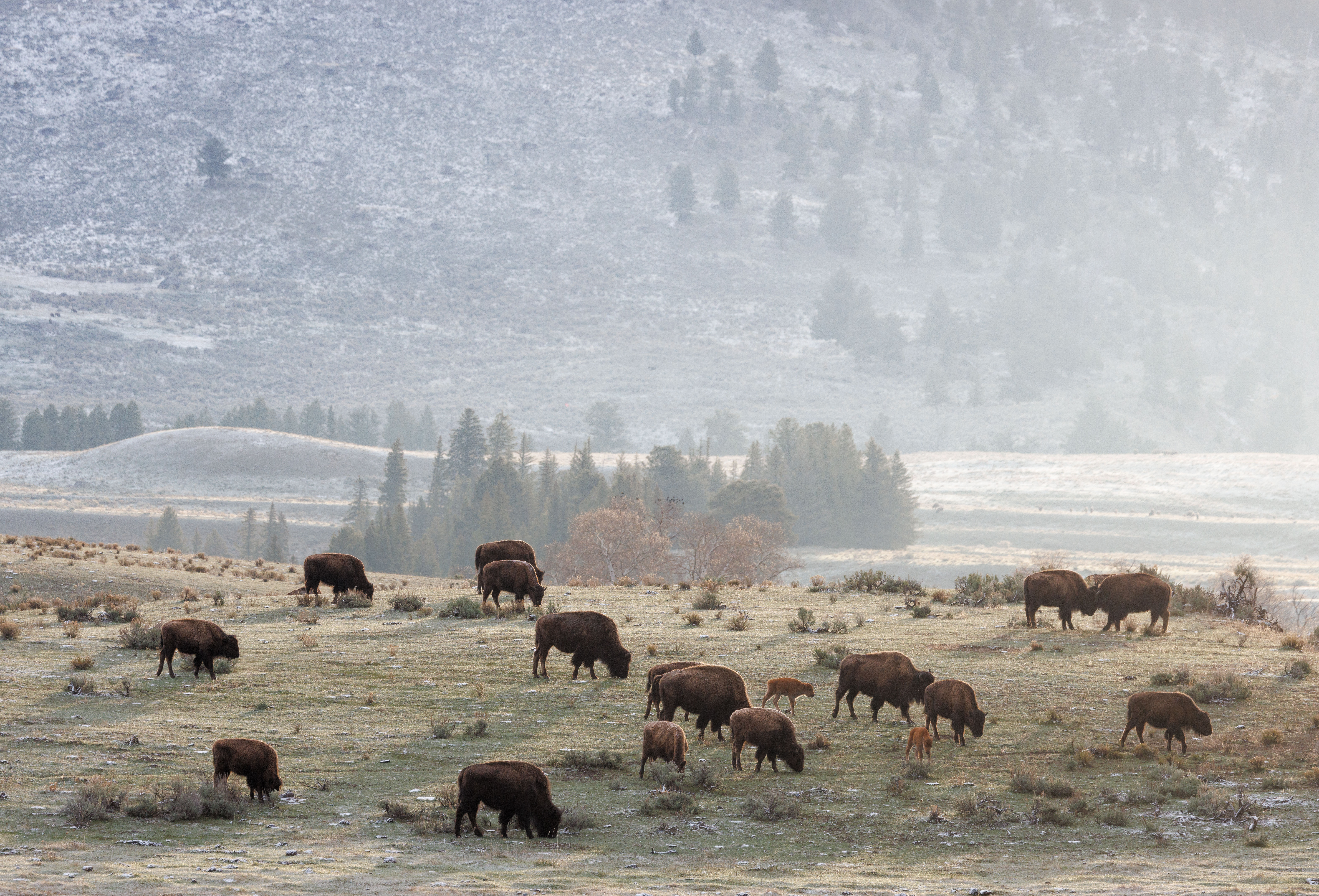
What is your typical camera setup for a Yellowstone photography trip?
Chas: Yellowstone provides unlimited creative photographic opportunity. Unique landscapes found nowhere else on the planet and abundant wildlife in daily struggle for survival. You never know what will unfold on a day to day basis.
I typically take multiple Canon EOS R5 and EOS R5C bodies, compatible batteries, cages, accessories, and the similar ergonomics of these cameras is a major plus. My lens selection includes a Canon RF600mm F/4, RF100-500mm, RF 24-105mm, RF-10-20mm, and an RF Extender 1.4X.
Nathan: I use an EOS R5 C with a super-telephoto prime and a flexible lens telephoto zoom lens, like the Canon RF 100-500mm f/4.5-7.1 L IS USM lens. I always have my Sachter tripod and monitor with me, and I’ll typically shoot with V-mount power to help run my camera and monitor all day.
Have you always used Canon cameras? If so, which of its technical innovations have benefitted your photography the most?
Chas: I changed systems many years ago when Canon started putting IS in its long lenses. This was influential tech that made a significant difference in how we used long super-telephoto lenses.
Canon’s color science has always been a cut above other brands. And the lens quality remains unsurpassed. I would like to add that Canon CPS (Canon Professional Services) has always provided outstanding customer service above and beyond all others, in my experience.
Nathan: I started with a Canon Rebel as kid, switched to trying Nikon and immediately went back to Canon after a year – I love Canon’s color science, easy-to-use interface, and glass too much!
In regard to innovation, Canon’s RF mount and lenses have truly elevated my craft. I’m so grateful to use a powerful camera system that seamlessly integrates with RF glass.
And which lenses are your favorites to use?
Chas: As a wildlife photographer my go-to lenses are the RF600mm F/4, RF400mm F/2.8, and the RF100-500mm F4.5-7.1. That said, the new RF200-800mm has proven itself outstanding for video.
Nathan: Easy. The Canon RF 24-105mm F2.8 L IS USM Z lens and the Canon RF 70-200mm F2.8 L IS USM lens. The RF 24-105mm F2.8 L IS USM Z lens is the most versatile travel lens I’ve ever shot with, in my opinion, and is perfect for almost all types of photography and videography (outside of wildlife, which I don’t actually shoot as much).
The RF 70-200mm F2.8 L IS USM lens is my favorite lens for landscapes, because of the compression and powerful perspective it provides. Some of my favorite images and videos have come from using this lens.
What do you get from the Canon EOS R5 C camera that you can’t from another setup – is it being able to offer the best of both worlds, capturing excellent stills and video?
Chas: Yes, the R5C allows me to quickly change formats, providing stunning 8K video and 45MP stills capability in a lightweight compact platform. The Cine OS and button customization allows me to quickly access video settings most appropriate for the task at hand. The R5C did it all!
Nathan: Yes, it’s exactly that. In my world of social media content creation, a professional hybrid camera is a must. The EOS R5 C provides the ability to switch from a professional stills camera to a powerful cinema camera in under four seconds, which is hard to beat for me, as a hybrid creator who wants to shoot both types of content at the highest level possible.
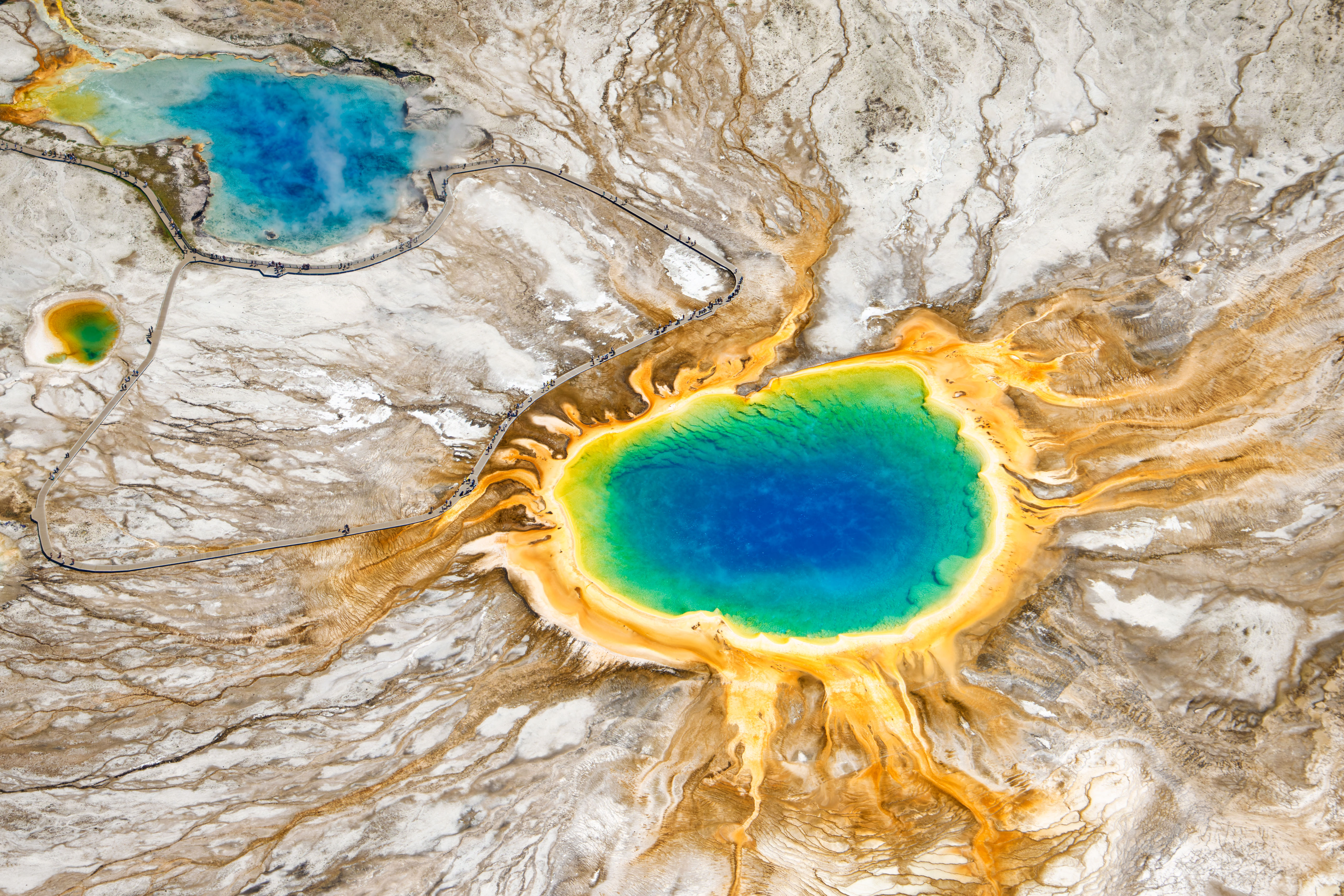
What’s more satisfying for you: photographing wildlife or landscapes? Or is there no pecking order?
Chas: Wildlife is my greatest passion, bears in particular, but I certainly enjoy and will make the most of any landscape opportunity that presents itself.
Nathan: For me it’s landscapes (even though I love both). I’ve always been drawn to the mountains and coast, particularly, and capturing moments in the most beautiful landscapes on Earth really keeps me inspired.
What are the most important factors you have in mind when composing your images?
Chas: An outstanding image is one where visual and emotional impact, lighting, exposure, selective focus, and a decisive moment all come together to invoke a response whereby the viewer is transcended from his world to the world we have put before them.
Composition is integral to achieving this end. Attention to foreground, middle ground, and background elements along with lighting and lens choice are critical to visual perspective and creatively presenting a three-dimensional image on a two-dimensional plane.
Contextual animalscape-type images that contain multiple compositional elements require greater scrutiny to maintain an overall aesthetic balance within the frame. Careful placement of each element along with proper depth of field is essential to creating a successful artistic reportage of both the scene and subject.
Nathan: Having the ability to see opportunities that most overlook, before you set up your composition in the first place.
Most people are technically capable of setting up a basic composition. Most people can photograph a big moment everyone is shooting, but then they fail to look around and see the hundreds of moments around them that are equally as powerful to the story they are telling. It’s about seeing and capturing the beauty in everything, not just one thing.
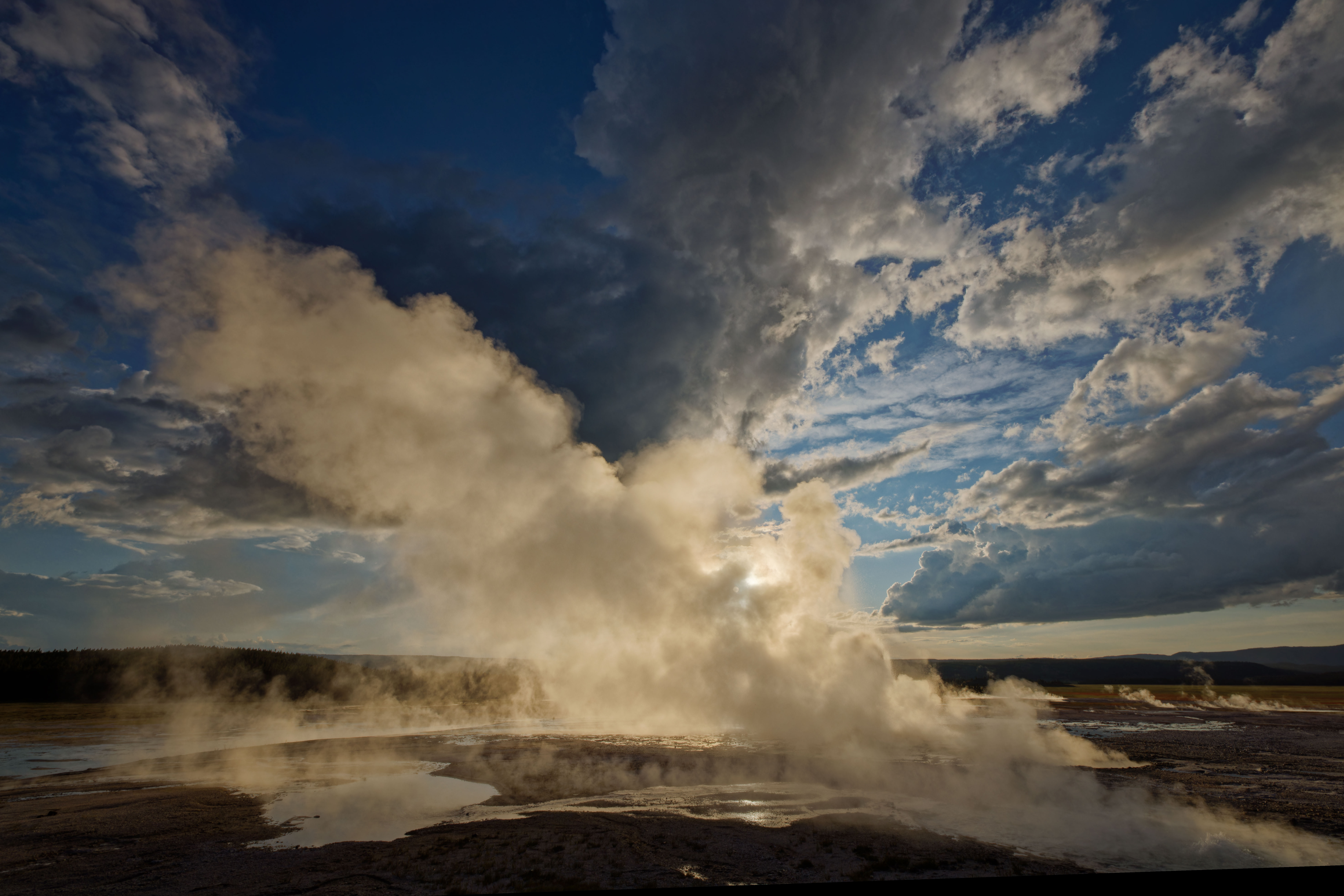
What’s your top tip for someone starting out who wants to become a professional outdoor photographer?
Chas: Learn to be proactive rather than reactive. By visualizing the image first in your mind, and thereafter choosing the right tools and techniques to capture the vision, you are effectively a step ahead in the creative process.
Understanding animal behavior can play a key role in our ability to be proactive. Most animal behavior has a “tell” that can be observed prior to action. Jaw popping, a tilt of the head, flattened or cocked ears, specific vocalizations, twitching talons, exhalation, squeezing of feathers – and so much more – are preludes that we can use to set up for… what’s going to happen next!
More importantly, and regardless of talent, a poor business plan or lack thereof will result in failure. I recently spoke to a young group of people who want to be photographers on this very topic!
It is critical that you determine and understand your product, clientele, how you’re going to maintain cash flow, how to effectively market your images and establish a unique brand.
Nathan: Similar to what I said before. Stop chasing what everyone is shooting and have the ability to see and capture the beauty in everything, not just the one thing.
That was my biggest mistake when starting out. If I didn’t have “perfect” conditions, I’d give up. It limited my mindset and ability as a creative, instead of pivoting and trying to adapt to what the day provided to me.

Does your photography and conservation work go hand-in-hand?
Chas: Yes. I believe part of my role as a wildlife photographer is to be a steward for the park and wildlife, helping to educate others and provide more information that will protect nature and wildlife. I strive to provide that through my work.
Also, adhering to the “leave no trace” principles is essential when capturing photos in the wild. It’s important to stay on trails or designated surfaces to avoid harming the environment. I also aim to minimize the amount of gear I bring to reduce my impact on the surroundings.
Nathan: Absolutely. I need to create and lead by example, especially with the platform I have online and on social media. My goal is to leave this world better than I found it, for my son and future generations to come. The planet doesn’t need us, but we need our planet, so we need to take care of it.
Read more Another version of this interview appears in the October 2024 issue of Digital Camera World magazine, which is on sale now.
Why not subscribe and get the magazine delivered to your door every month? Choose between a print or digital subscription, or a bundle of the two.
All subscribers to Digital Camera magazine can now access digital back issues dating from 2009 (when using iOS) or 2012 (when using the Pocketmags Magazine Newsstand app or the Pocketmags website).
Scroll down to see our current subscription offer.







